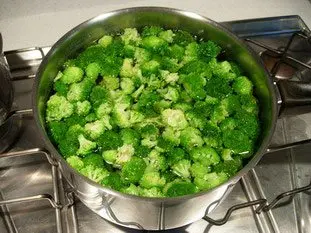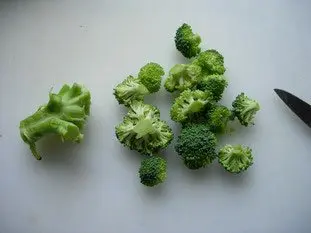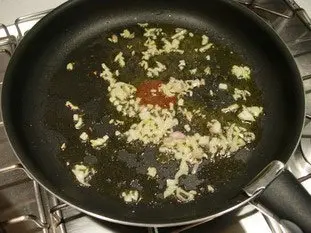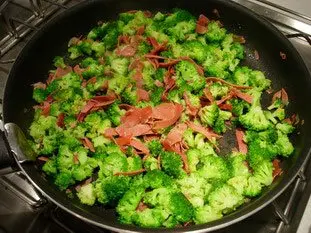This site uses only a few technical cookies necessary for its operation. By continuing to browse, you accept their use.
To find out more...
To find out more...
Children and vegetables

This is an attempt to address the question that all parents and grandparents, maybe you included, face so often: how can we get children to like vegetables? And at the same time, we might get away from the familiar, day-in, day-out round of pasta, chips, toast..
Well, I can hear you say, it's not that easy, maybe “Mission Impossible”. Even so, there are some things you can try which might help.
Well, I can hear you say, it's not that easy, maybe “Mission Impossible”. Even so, there are some things you can try which might help.
16 K 5/5 (12 reviews)
Last modified on: March 9th 2017
Children and vegetables
First of all, an observation: our little darlings are very sensitive to appearances. So, if the food does not look “nice” to start with, you've already lost the battle! In other words, if green vegetables don't look attractively green when you put them in front of children, you'll hear, even before they try the food, “It looks yukky, I don't like it!” And who can blame them when “canteen” vegetables are so often a sorry sight: big chunks of khaki-coloured broccoli, cooked to death and still swimming in a pool of murky water – hardly likely to win over adults, let alone children!
Let's stick with broccoli for a moment, as it's a good illustration of the problem we're up against: for even half a chance that children will like it, it needs to be beautifully fresh and green, only just cooked (still with a little “bite”), cut up small, and – above all – good quality.
2) First, boil lightly: Plunge the broccoli into a large pan of boiling salted water or, better still, chicken stock, for 3 or 4 minutes. Watch for the change in colour to a bright emerald green, then check if cooked by tasting. The broccoli should still be slightly firm. Drain and cool straight away in cold (or even iced) water to stop the cooking (very important). When cool, drain again thoroughly – a salad spinner is the best way of doing this.
3) Add flavour with butter and shallot: Peel a shallot and chop very finely. Melt a generous knob of butter in a pan, add the shallot, salt and pepper and cook for 1 minute (without browning either the butter or the shallot).
4) Second, very brief cooking: Add the broccoli to the pan and stir well. Heat through (rather than cook any further), salt and pepper lightly, then taste to check the seasoning. Serve immediately, keeping your fingers crossed…
You can also include other food you wish to serve with the vegetables. Here, for example, there are bits of ham added.
Please note: It could well be that when you serve the food, you may need to be firm and use the good old “Taste it first!”
You will have realised by now that there is no magic formula to get children to enjoy vegetables, but by making an effort like this, you will at least stand a chance. And, if nothing else, this is the way good restaurants cook and the secret of the colourful and attractive vegetables shown on TV cookery programmes.
To sum up: To appeal to children, vegetables need to be cut up small, look colourful and have plenty of flavour.
Let's stick with broccoli for a moment, as it's a good illustration of the problem we're up against: for even half a chance that children will like it, it needs to be beautifully fresh and green, only just cooked (still with a little “bite”), cut up small, and – above all – good quality.
What to do:
1) Cut up to an appropriate size: the notion of “big” or “small” is different for adults and children. For our purposes, broccoli needs to be cut into small, separate florets – only these tips – about the size of the top joint of your thumb and no larger. Rinse thoroughly.
2) First, boil lightly: Plunge the broccoli into a large pan of boiling salted water or, better still, chicken stock, for 3 or 4 minutes. Watch for the change in colour to a bright emerald green, then check if cooked by tasting. The broccoli should still be slightly firm. Drain and cool straight away in cold (or even iced) water to stop the cooking (very important). When cool, drain again thoroughly – a salad spinner is the best way of doing this.

3) Add flavour with butter and shallot: Peel a shallot and chop very finely. Melt a generous knob of butter in a pan, add the shallot, salt and pepper and cook for 1 minute (without browning either the butter or the shallot).

4) Second, very brief cooking: Add the broccoli to the pan and stir well. Heat through (rather than cook any further), salt and pepper lightly, then taste to check the seasoning. Serve immediately, keeping your fingers crossed…
You can also include other food you wish to serve with the vegetables. Here, for example, there are bits of ham added.

Please note: It could well be that when you serve the food, you may need to be firm and use the good old “Taste it first!”
And the last resort?
If all else fails, don't despair! Over time, as we grow up into teenagers, then adults, our tastes change quite dramatically: it was impossible to get my elder son to eat spinach, for example, when he was small. Now he loves it.You will have realised by now that there is no magic formula to get children to enjoy vegetables, but by making an effort like this, you will at least stand a chance. And, if nothing else, this is the way good restaurants cook and the secret of the colourful and attractive vegetables shown on TV cookery programmes.
To sum up: To appeal to children, vegetables need to be cut up small, look colourful and have plenty of flavour.
Lasts posts
Butter vs. grease
We often read in a recipe where a pastry is put into a mould that, just before pouring, the mould should be buttered or greased. But what's the difference between these 2 terms?December 1st 20259735
Getting out of the fridge early
Very often when you're cooking, you need to take food or preparations out of the fridge, to use them in the recipe in progress. There's nothing tricky about this: you just take them out of the fridge and use them, usually immediately, in the recipe. But is this really a good method?November 24th 20251,1105
Who's making the croissants?
When you look at a bakery from the outside, you naturally think that in the bakery, the bakers make the bread, and in the laboratory, the pastry chefs make the cakes. It's very often like that, with each of these professions having quite different ways of working, but sometimes there's also one...November 23th 20251,001
Oven height
When we put a dish or cake in the oven, we naturally tend to put it on the middle shelf, and that's what we usually do. But in some cases, this position and height can be a little tricky, so let's find out why.October 8th 20252,7365
The importance of sieving
In recipes that use a fine powder (flour, powdered sugar, etc.), you'll often see the advice to sift before using it. To sift is to pass the powder in question through a sieve (a very fine strainer) before incorporating it into your recipe. It's often advice, but is it really useful?September 3rd 20257,5283
Other pages you may also like
Candied fruits: don't get ripped off
Do you like candied fruit? You might like to nibble a handful or add it to a recipe, like a classic fruit cake or delicious Italian specialities like panettone or sicilian epiphany pie.June 21th 201767 K 24.2
The bitterness of endives
As I write these lines, we are entering the endive season, and if you like it, it's time to enjoy it, if possible with your local producers. Endive is good, but the reproach that is often made of it, and children in particular, is: "It's bitter! And it is (somewhat) true of course, endives...February 9th 201914 K4.9
Cleaning endives
If you buy your endives elsewhere than in supermarkets, and in this case the best is of course from a market gardener, he or she is the one who planted and harvested them, in this case you will have endives full of earth or sand, depending on where they were grown, which is normal and reassuring, we...March 24th 202026 K4.6
In praise of the whetstone
Have you ever seen a butcher or a chef sharpen his knife before using it? Usually he uses a special tool, a long thin cylinder made of very hard metal. And in a smooth and elegant gesture, he very quickly passes the edge of the knife against the rifle, which makes a very characteristic noise,...June 5th 202112 K4.8
The preservation of bread
Eating fresh bread is always a delight, the crust crumbles deliciously, you take full advantage of the taste of your bread (80% of this taste is in the crust), it is a fleeting moment to enjoy. Who hasn't already eaten the crouton or croutons of his baguette, on the way back from the bakery? ...June 11th 202214 K4.7
Post a comment or question
Follow this page
If you are interested in this page, you can "follow" it, by entering your email address here. You will then receive a notification immediately each time the page is modified or a new comment is added. Please note that you will need to confirm this following.
Note: We'll never share your e-mail address with anyone else.
Alternatively: you can subscribe to the mailing list of cooling-ez.com , you will receive a e-mail for each new recipe published on the site.









